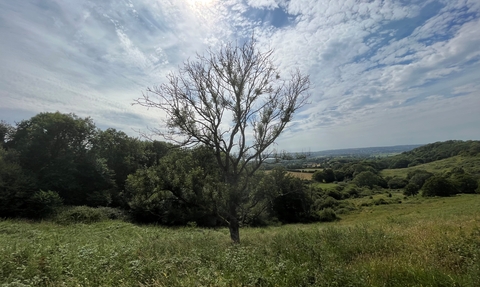Avon Wildlife Trust is calling on people to help keep wild spaces safe, as ash dieback proves to be a significant safety issue across the region.
Ash trees are the third most common tree in Britain after oak and birch - there are 80 million of them in the UK. Ash dieback is caused by a fungus called hymenoscyphus faxineus, which affects the vascular system of ash trees, inhibiting its ability to draw up nutrients into their upper branches. This makes infected tree brittle and prone to dropping branches, potentially causing serious harm.
Losing these trees would also have a very detrimental effect on our local wildlife, from the ground up: woodland floor wildflowers thrive on the sunlight that comes through their airy canopy, which support butterflies and other pollinators, who are joined in the sky by bullfinches, who eat the seeds from ash trees, and woodpeckers, owls, redstarts and nuthatches, who all nest in them.
As part of Avon Wildlife Trust's efforts to protect and restore nature, we also recognise that in some cases it is better to leave the infected trees which are not a risk to public safety to rot and fall. This is because the emerging habitat can be more vibrant, more diverse and more welcoming to wildlife than the habitat it replaces. The resulting decay releases life-supporting nutrients, and the deadwood provides food and a home for hundred of species such as stag beetles, as well as woodpeckers, which feed on those insects.
As well as wanting to do everything possible to ensure the biodiversity of Avon Wildlife Trust's reserves, keeping our visitors safe is at the absolute core of the Trust's ash dieback work. The charity is having to undertake a colossal programme of work to keep staff, volunteers and visitors safe when they’re visiting nature reserves. From surveying the Trust's sites to assess the impact of the disease, planning where they will need to fell impacted trees and where they can allow them to complete their natural lifecycle, to completing all of the land management tasks this creates and removing the diseased trees most likely to cause damage. It is a huge amount of necessary work which the Trust absolutely needs to do as a responsible land manager and to ensure that nature can recover. But it’s not going to be easy.
That why the local conservation charity is asking people in Bristol, Bath, South Gloucestershire and North Somerset to consider donating to its ash dieback appeal.

